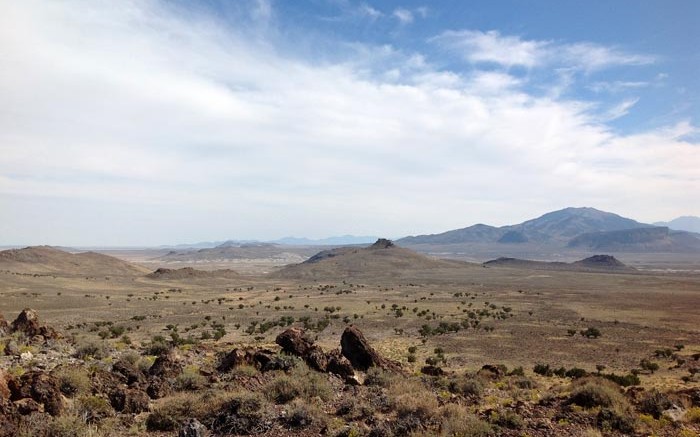VANCOUVER — Nevada-focused gold explorer West Kirkland Mining (TSXV: WKM; US-OTC: WKLDF) has unveiled a preliminary economic assessment (PEA) for its TUG gold-silver deposit on the Long Canyon gold trend along the Utah-Nevada border in Elko County. The company has spent US$4.1 million on the project to date, which fulfills an earn-in requirement that will see it garner a 60% operational stake in the project alongside joint-venture partner Newmont Mining (TSX: NMC; NYSE: NEM).
TUG is part of an option agreement West Kirkland signed with Fronteer Gold in 2010 — before Fronteer was snapped up for US$2.3 billion by Newmont in February 2011 —and though the deposit will not score a lot of points for size or grade, it does offer potential for a quick and relatively cheap start-up due to its near-surface, oxidized nature.
Just over a year ago West Kirkland released a global inferred resource at TUG that totalled 27 million tonnes grading 0.49 gram gold per tonne and 15.8 grams silver per tonne for 679,000 contained equivalent oz. gold. The company has since bumped a portion of its resource into the indicated category, and focused on outlining an open-pit scenario constrained by a US$17 per tonne net smelter return (NSR) cut-off.
West Kirkland’s has zeroed in on a smaller, higher-grade resource of 4.8 million indicated tonnes grading 0.84 gram gold and 40.4 grams silver for 131,000 oz. contained gold and 6.3 million oz. contained silver. Additional in-pit inferred resources total 4.4 million tonnes grading 0.79 gram gold and 30.3 grams silver for 111,000 oz. contained gold and 4.3 million oz. contained silver.
The company’s PEA concentrates on an even smaller resource with a higher average grade. Economically assessed resources total 3.9 million tonnes averaging 0.9 gram gold and 42.8 grams silver for 114,000 contained oz. gold and 5.43 million oz. contained silver. It is worth noting, however, that the resource calculations in the PEA assume a US$1,700 per oz. gold price and US$29 per oz. silver price.
One thing TUG has going for it is a very low start-up cost at just US$24 million, which would buy a 3,000 tonnes per day heap-leach operation that would operate at cash costs of around US$902 per gold equivalent oz. The study assumes gold and silver recoveries of 58% and 15%, as well as a 2.7-to-1 strip ratio.
West Kirkland acknowledges it will likely require higher precious metal prices before moving forward with TUG’s development. At US$1,525 per oz. gold and US$28 per oz. silver — spot prices were at US$1,312 per oz. and US$19.91 per oz. at press time — the project carries a 26% after-tax internal rate of return (IRR) and US$9-million net present value (NPV) at an 8% discount rate. TUG’s NPV falls into negative territory at current gold prices.
“Our completion of the resource and [PEA] for the TUG gold project shows the potential for production,” commented president and CEO Michael Jones, noting the project would likely require a stable gold price around US$1,500 per oz. “At the current time we will continue conserving [our working capital position] and are now assessing opportunities for acquisition of additional gold and silver assets. We are targeting projects that are a logical addition to TUG and where we can use our expertise in exploration and into operations.”
TUG represents just a small portion of West Kirkland’s agreement with Newmont, which allows it to earn up to 60% in 11 properties in Nevada that cover around 234 sq. km. The company is hoping it can identify additional satellite deposits that could boost economics at TUG by tacking on more mill feed over truckable distances.
West Kirkland also continues to explore a project package it scored through an earn-in agreement with Rubicon Minerals (TSX: RMX; NYSE-Arca: RBY), wherein it can option up to 60% in several wholly owned Rubicon properties in northeastern Nevada. In 2013 the company completed 3,100 metres over its Rubicon projects, with a focus on its 12 Mile and Bandito targets.
In April West Kirkland released results from its exploration program. Highlights from 12 Mile, which lies 10 km east of TUG, include: 18 metres grading 0.26 gram gold and 1.08 grams silver from 70 metres depth in hole 13-008; and 10 metres of 0.59 gram gold from 157 metres in hole 13-010. At Bandito hole 13-001 returned 12.19 meters grading 0.96 gram gold and 5.06 gram silver from a depth of 44 meters, though three additional holes did not return significant assays.
According to Jones West Kirkland was sitting on a working capital position of US$1 million at press time. The company raised US$5.6 million in early February, when it completed a 22.4-million unit private placement at a price of 25¢ per unit. Since then West Kirkland has followed gold prices downward, with its shares dropping 53%, or 14¢ over the past six months, en route to a 12.5¢ close. The company maintains 60.3 million shares outstanding for a $7.5-million market capitalization.


Be the first to comment on "West Kirkland’s PEA at TUG hit by lower gold price"